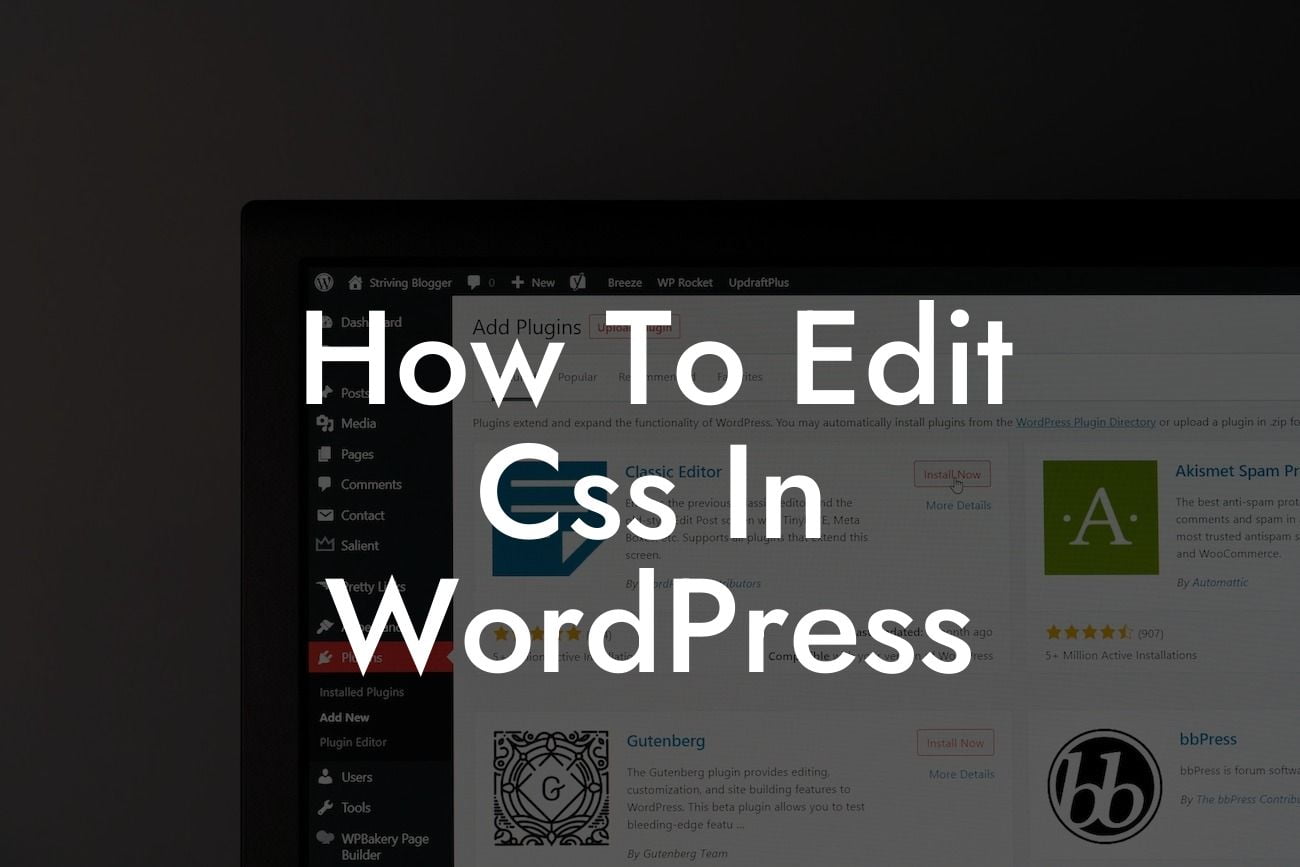WordPress is a powerful platform that allows small businesses and entrepreneurs to create stunning websites with ease. However, when it comes to customization, many find themselves limited by the constraints of pre-designed templates. That's where CSS comes in. In this article, we will explore the intricacies of editing CSS in WordPress, empowering you to take control of your website's appearance and create a unique online presence that sets you apart from the competition.
Editing CSS might seem like a daunting task for beginners, but fear not, as we will walk you through a step-by-step process to make it as simple as possible.
1. Understanding CSS Hooks:
Before diving into editing CSS, it's important to understand CSS hooks. These are specific classes or IDs used within theme files to target specific elements on your website. Familiarizing yourself with these hooks will help you identify the elements you wish to customize.
2. Using a Child Theme:
Looking For a Custom QuickBook Integration?
One of the best practices in WordPress customization is to use a child theme. This ensures that your customizations won't be lost when updating your theme. We'll guide you through creating and activating a child theme.
3. Using the Built-in CSS Editor:
WordPress provides a built-in CSS editor that allows you to make quick and easy changes to your website's appearance. We'll show you where to find it and how to use it effectively.
4. Editing CSS in Theme Files:
For more advanced customizations, editing the CSS directly in theme files is often necessary. We'll explain how to locate the appropriate files and guide you through the process of making changes safely.
5. Utilizing CSS Plugins:
If you're not comfortable editing code directly, there are plenty of CSS plugins available. We'll introduce you to some popular options and demonstrate how to use them to achieve the desired results.
How To Edit Css In Wordpress Example:
Let's say you have a WordPress website and you want to change the font color of your navigational menu. We'll walk you through the process of identifying the appropriate CSS hook, accessing the CSS editor, and making the necessary changes to achieve the desired result.
Congratulations! You've learned how to edit CSS in WordPress, empowering you to customize your website's appearance and create a unique online presence. Take your website to the next level with DamnWoo's awesome plugins, designed exclusively for small businesses and entrepreneurs. Share this article with others who might find it useful and stay tuned for more insightful guides on our blog. Start exploring the extraordinary possibilities now!
[CTA] Explore DamnWoo's plugins and enhance your WordPress website today!













